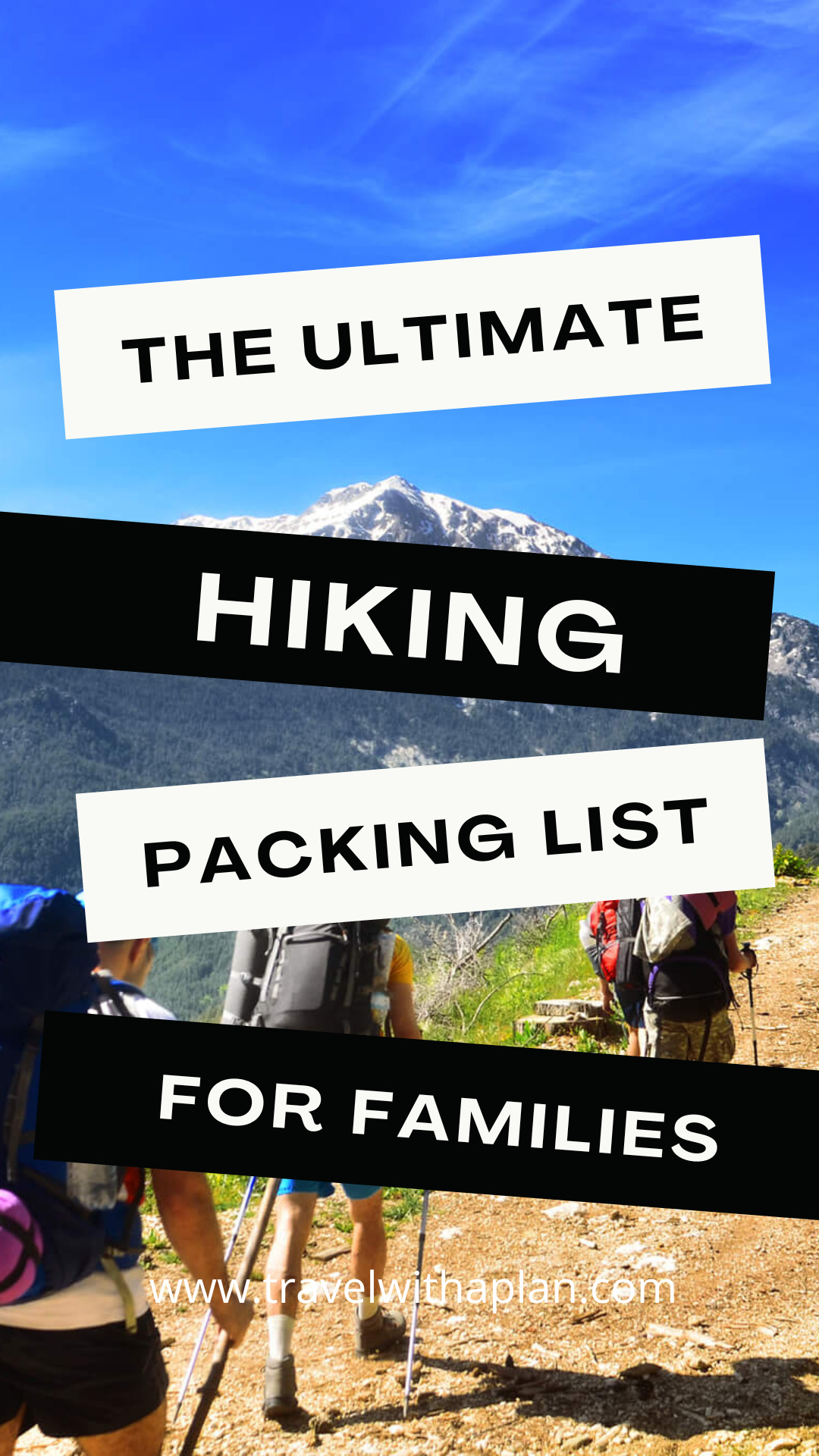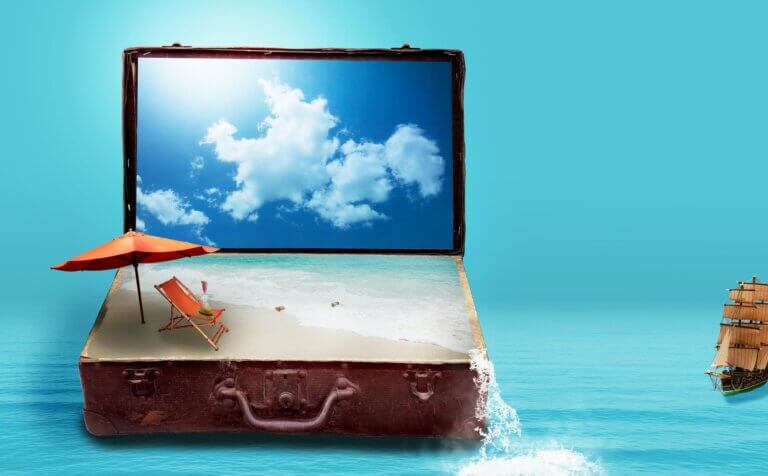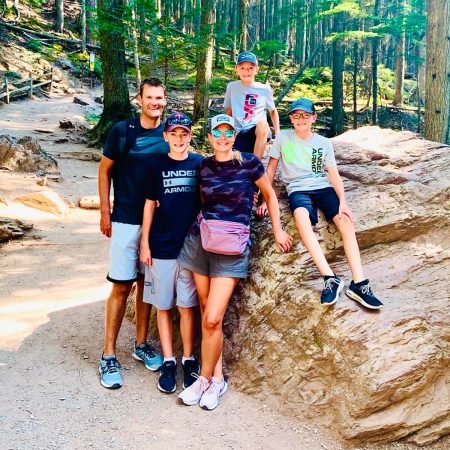This post may contain affiliate links, view our disclosure policy.
Are you in need of a hiking packing list that covers all the essentials you’ll need when going on a family hike?
Packing for any kind of trip can be stressful with that lingering feeling that you’re forgetting something, especially when packing for a hike or when going hiking with kids.
When you’re heading to the woods or out on the trails, there may not be a store to pick up what didn’t make the trip.
And with your safety and comfort on the line, you want to make sure you’re prepared with all the important items.
Whether you’re heading out for a few hours locally or venturing to remote trails or U.S. National Parks, this hiking gear list will cover all the things you’ll need while enjoying the great outdoors.
The links on this page are Amazon affiliate links. If you click on the links and make a purchase, I receive a small commission at no extra cost to you.
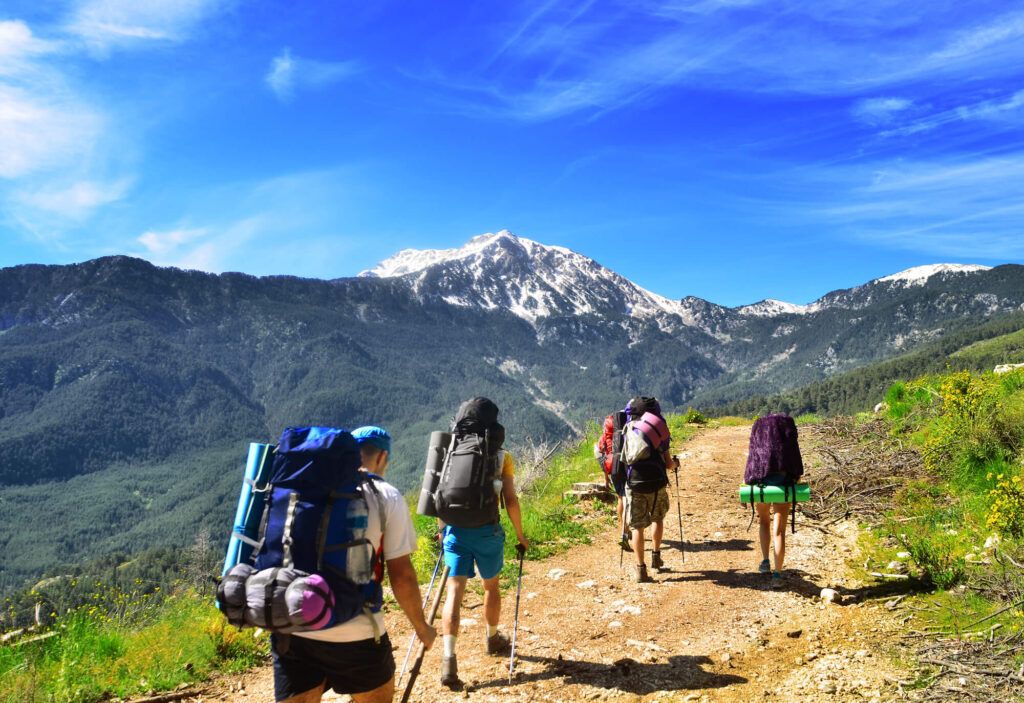
What Type of Hike Are You Going On?
Before you can even begin preparing to pack for your hike, you’ll need to figure out exactly the type of hike you’re going on.
Is it going to be a long day hike?
Will you be camping overnight?
How strenuous will the hike be?
Answering these questions beforehand will help you adequately prepare for your trip.
Also, consider the weather.
Check the forecast to get a good indicator, but also prepare for any type of weather conditions that may arise unexpectedly.
Especially in higher elevations, things can change quite suddenly – and the last thing you want is to get stuck in a downpour without any gear!
Next, question your rumbling stomach.
How hungry and thirsty do you typically get?
Depending on your access to fresh water sources, how difficult the hike is, and your own personal endurance level, the amount of water and food you need will vary.
Ideally, you want to pack enough to be prepared while keeping your backpack lightweight.
It’s a fine balance, for sure!
Keep scrolling throughout this post as our hiking packing list covers the following topics:
- Top 10 hiking essentials
- Optional items for day hiking
- Essential clothing for hiking
- Overnight hiking packing list
- Emergency kit must-haves
- What not to bring on a hike
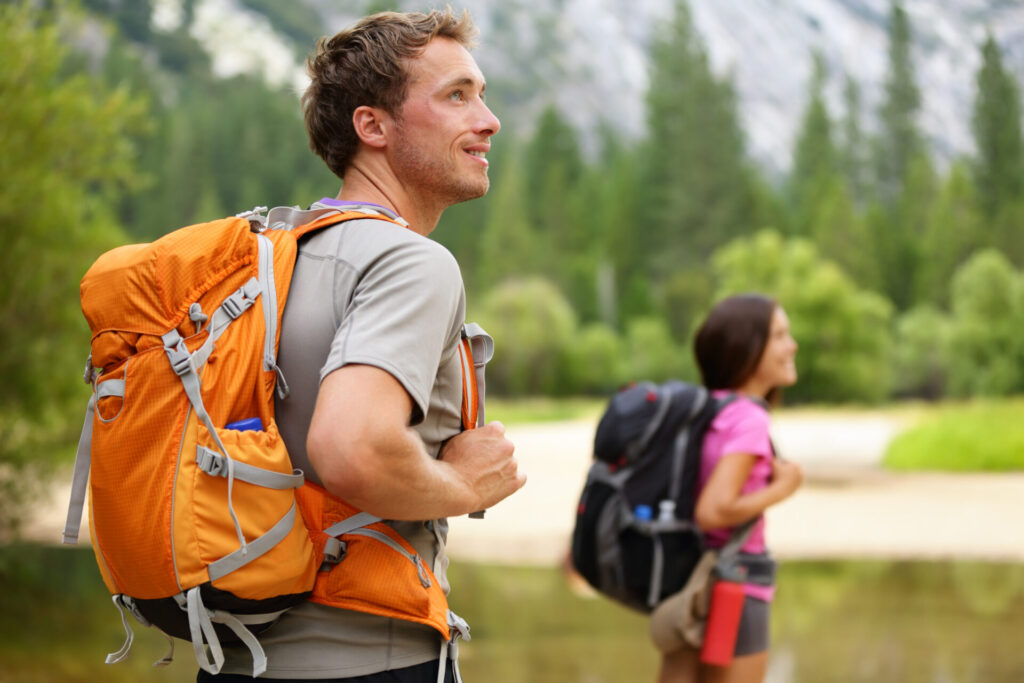
The Hiking Packing List Essentials
Breaking down the top ten items you need to bring was a hard one, but these are things you absolutely must pack for your next hiking trip.
1. Lightweight Day Pack
The most important piece of day hiking gear you’ll need is a backpack.
Since this is the bag that’s going to ‘hold it all’, you want to make sure you make a good investment in it.
First, look for a backpack with lots of compartments that makes finding what you need easy.
I recommend getting one with a built-in water bottle holder on the side for quick access when thirst comes calling.
Next, you want the bag itself to be lightweight.
Since you’ll be adding plenty of weight to it, look for one that won’t pack on any additional pounds you don’t need.
Lastly, look for comfort!
You’ll be wearing it for quite a while, so make sure it sits on the shoulders well with extra padding and adjustable straps.
Additionally, look for sternum straps and hip belts for added comfort.
The Osprey Tempest 20 for women or Osprey Talon 22 for men are my favorite day hiking packs that I recommend for day or hours-long hiking excursions.
Another great, less expensive option is the Columbia Tandem Trail which is lightweight, versatile, and comes in a variety of color options.
You can’t go wrong with either.
**Our USA bucket list includes epic hiking destinations and can help you plan incredible outdoor getaways to places like Grand Canyon National Park in Arizona and Joshua Tree National Park in California.
2. Water Bottle
A water bottle is another absolute must-bring item for hiking.
In fact, multiple water bottles are best as the average person needs ½ liter (2 cups) of water per every hour of hiking.
I prefer to bring a collapsible water bottle as they don’t take up much room when not in use.
Whatever water bottle you bring, however, just make sure it seals well and that you bring enough with you!
Alternatively, you can consider using a hydration backpack.
This only works if you’re hiking with someone else who has additional space to store your other hiking items in as it is nearly impossible to wear both a regular AND a hydration backpack.
Additional planning tip: If you happen to purchase or own the Osprey backpacks mentioned above, the Osprey Hydraulics Water Reservoir is tailored to fit seamlessly into the Osprey packs (although it will fit just fine in other packs too).
Simply fill the reservoir with water, place it inside of the backpack, and secure the tubing and mouthpiece within reach.
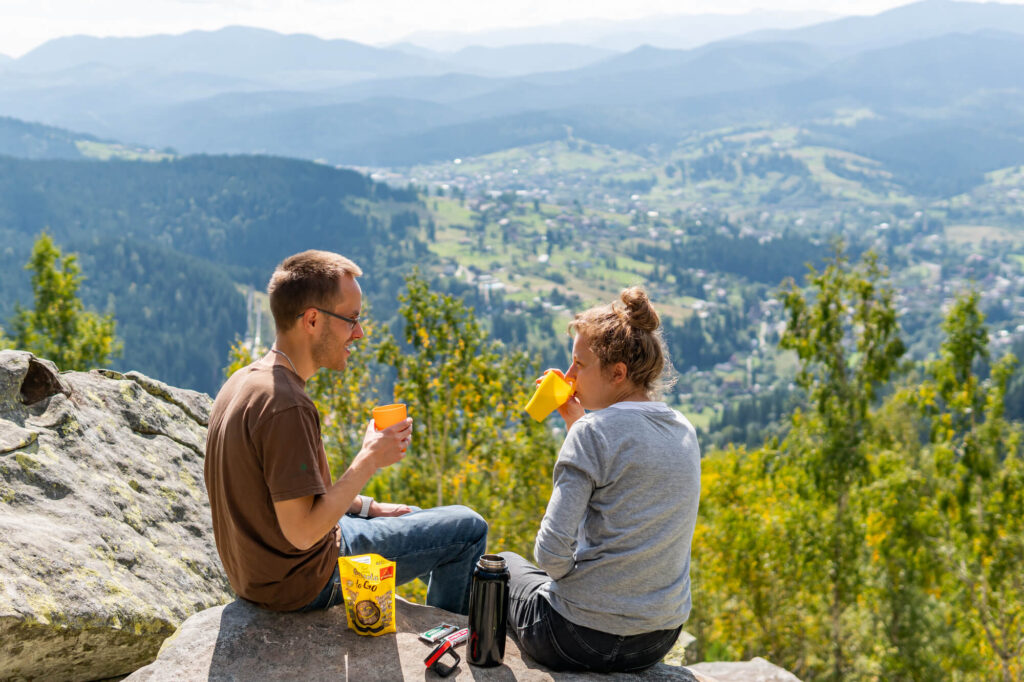
3. Non-Perishable Snacks
When hiking, you want high-protein and high-energy snacks such as trail mix, homemade snack mixes, beef jerky, peanut butter, nut and seed granola bars, and energy bars, like my personal favorite, CLIF Bars.
This will keep you well-fuelled throughout your hike.
For safety reasons, always bring more than you think you need.
Just in case you end up spending longer than you imagined in the woods, your belly (and energy level) will stay full!
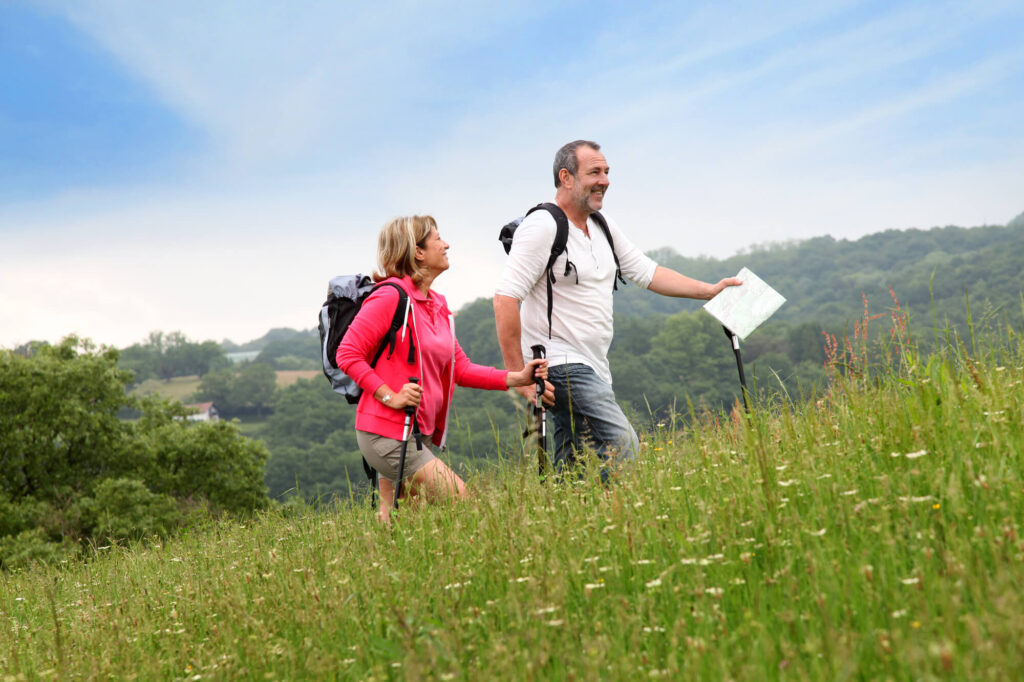
4. A Trail Map & Compass
It may seem obvious, but when hiking, you’re going to need to know where you’re going!
And while phones have almost wiped the need for maps and a GPS, the reality of hiking is that they won’t be of much use.
Most hiking trails are not listed on Google Maps, you’ll likely lose service, and your phone battery may die.
Even if it is a heavily trafficked hike and you just plan on heading out for the day, always bring a compass (if you know how to use one) and a physical trail map in case of an emergency situation.
Maps can typically be picked up at the park headquarters or sometimes at the trailhead.
5. Emergency Contact Info
How many phone numbers could you say off the top of your head?
Me personally, not many.
For this reason, bring along any emergency contact numbers with you in case you need to reach out to someone – or, if the worst happens, somebody is able to contact your family in case you aren’t able to.
Your emergency contact info should also include local emergency numbers to call in case you need help, as well as any actions that should be taken should someone get injured or lost.
Additional planning tip: Carrying your ID, some extra cash, and sharing your itinerary with someone else before you leave are also good practices when going hiking.
6. Rain Gear
Always bring a rain jacket or some sort of rain protection when considering your hiking equipment list.
You never know when the mountains or other areas might bring in an unexpected storm.
Note that when you’re hiking and wet, you’re absolutely miserable.
To keep things lightweight and compact, bring a plastic rain poncho that can be purchased from the dollar store or better yet, one of these sturdy, reusable rain ponchos.
Alternatively, there are plenty of water-resistant jacket shells that roll up nice and tight and won’t take up a ton of space in your backpack.
7. Sun Protection
Let’s hope it’s a sunny day for your hike!
But remember, you need to prepare for a day spent out in the sunshine just as much as the rain.
If you’re going to be in the sun for a long time, make sure to bring protection from the sun, including sunscreen, a hat, sunglasses, and lip balm with SPF.
These are my favorite all-purpose sunglasses as they come in several styles and offer 100% UVA and UVB protection, plus, includes an eco-friendly line.
As a proud partner, use Promo Code TRAVELWITHAPLAN for 20% off your purchase!
8. First Aid Kit
You knew this one would be on here!
Bringing along a portable first aid kit when hiking is one of the best ways to stay prepared for whatever comes your way.
First aid kids can help with anything from scratches to nasty bug bites.
A hiking first aid kit should include:
- Medical tape and butterfly closures
- Antiseptic or alcohol wipes
- Dressing or gauze
- Antibiotic ointment
- Hand sanitizer
- Medical gloves
- Ibuprofen tablets
- Antihistamine tablets (for unexpected allergy attacks)
- Safety pins
- Small scissors
- Sewing needle
9. Hand-Held Multi-Tool Device
We use our LEATHERMAN multitool every time we go hiking!
This tool will become your best friend too!
While a knife is an important thing to bring, a multi-tool is an even more excellent thing to pack as they include pliers, wire cutters, a screwdriver, a can opener, and oftentimes more.
This will come in handy for essential tasks, fix-it situations, or emergencies on the trail.
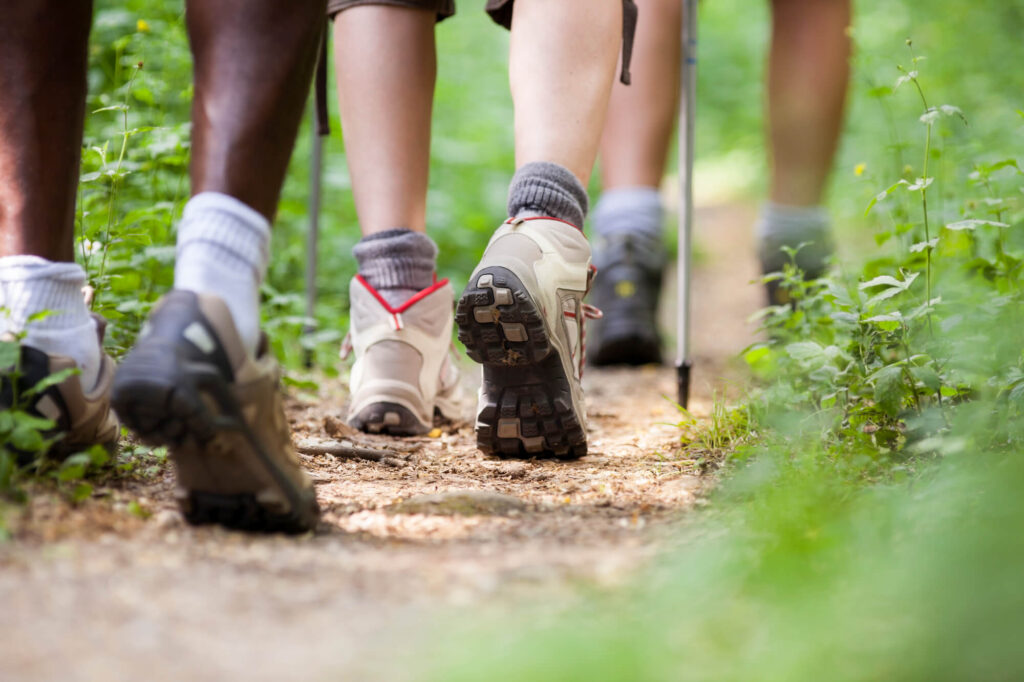
10. Hiking Shoes/Boots
If you’re only heading out for a couple of hours every now and then, your typical running shoes will do you just fine.
But if you intend on hiking lots and for long periods of time, you will want to invest in a good pair of hiking boots or shoes.
I absolutely love, and recommend over and over, my Columbia Newton Ridge Plus hiking shoes as the go-to footwear for hiking.
Not only are they ultra sturdy and durable, but they’re an excellent price (less than $100!).
You won’t find a better quality boot at a lower price.
Optional Items for Your Day Hiking Packing List
Besides the main hiking essentials on this list, here are a few more items you may want to bring as part of your day hike checklist.
- Garbage or plastic bags
- Insect repellent
- Camera
- Binoculars
- Tripod
- Trekking poles (especially for older adults or anyone with balance or stability issues)
- Backpack rain cover
- Fishing equipment and fishing license
- Swimsuit and towel (microfiber towels roll up small)
- Hand sanitizer
- Toilet paper
- Trowel or baggie (most national parks require you to carry out your waste rather than bury it)
- Cooling towel and other gear to keep cool
- Electrolyte drink mix (summer must-have)
- Crampon ice cleats (winter must-have)
- Gloves (bring an extra pair)
- Warm hat or ear covering
- Neckwarmer
- Leg gaiters (for wet, muddy, and snowy conditions)
- Disposable hand warmers (in case of cold weather)
**Looking for some great hikes in the USA? Check out our 3-day Glacier National Park itinerary that includes our all-time favorite family-friendly hikes.
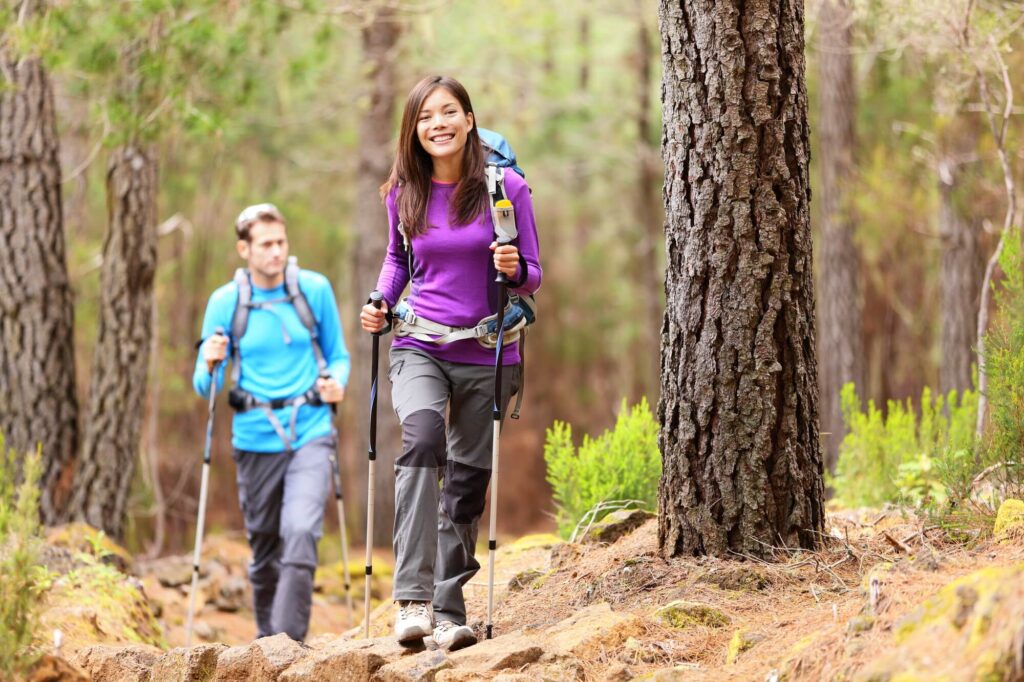
Essential Clothing for Your Hiking Packing List
Depending on the hike, you’ll want to consider a variety of hiking gear clothing options.
Whatever you do, always dress in layers (as you may be going out in a t-shirt and coming back in your fleece jacket or vice versa).
- Hiking shoes or boots (it’s worth the investment, trust me!)
- Mid-to-heavy outer jacket (good option for cool weather or high elevation hikes)
- Fleece or warm middle layer
- Base layer (I recommend merino wool layers)
- Rain or wind jacket shell
- Rain pants (for extra heavy rainfall)
- Water sandals
- Wool socks
- Extra quick dry socks (for when you inevitably step in that muddy puddle)
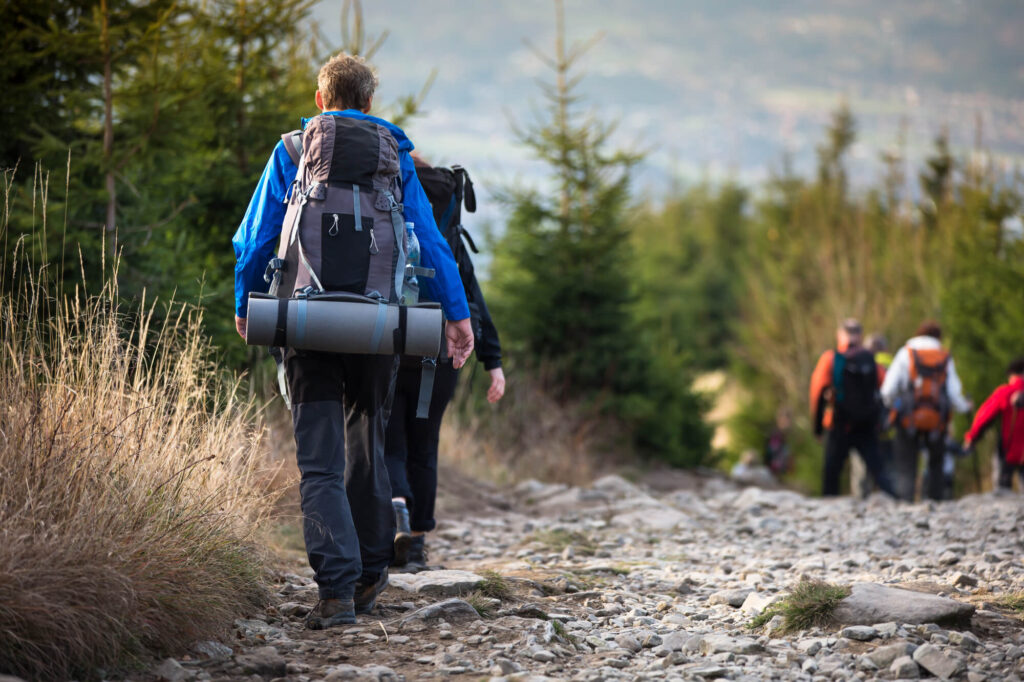
Overnight Trip Hiking Packing List
Overnight hikes require quite a few extra things beyond day hike packing.
After all, you’ve got sleep to plan for!
Your overnight hiking packing list should include:
- A larger backpack than those for short hikes – like our favorite, the Osprey Aura AG 65 for women and Osprey Atmos AG 65 for men (complete with zippered sleeping bag compartments)
- Dehydrated meals (test them out before you go so you know you like them)
- Camping/backpacking stove cooking system
- Backpacking tent
- Sleeping bag
- Sleeping bag liner (a good idea for another layer while sleeping)
- Compact sleeping pad
- Utensils
- Repair kit (to help fix backpack, tent, bag, jackets, and even shoes)
- Book or Kindle (not totally necessary but will give you a little entertainment at night)
- Microfiber towel
**If you enjoy lists…check out our ultimate family camping checklist that includes additional items needed for overnight stays in the great outdoors!
Emergency Kit Must-Haves
When it comes to hiking, safety should always come first.
I highly recommend packing an emergency kit, especially if you plan to do an extended hike or be in a remote area.
- First aid kit (see must-haves above)
- Additional blister care (such as moleskins)
- Bear spray (check to see if you’re in bear country before hiking)
- Knife (or multi-purpose tool)
- Lighter and matches or another firestarter
- Space blanket (can keep you warm or be used as a shelter)
- Water filter or purifier
- GPS device
- Flashlight or headlamp
- Cash and credit card
- Duct tape (it really can fix anything)
- Whistle
What Not to Bring on A Hike
It may go without saying, but there are several things you should not bring on a hike.
- When going on day hikes, you can avoid packing bulky overnight gear and toiletry items that take much more time and money to organize and pack.
- Avoid wearing denim while hiking as it can be chaffing to the skin. Jeans are bad at moisture-wicking, breathability, comfort, and abrasion.
- Do not bring jewelry or other valuables with you when heading out for a hike. In addition leave behind large amounts of cash that are at risk of getting lost.
- Do not pack fancy or ‘nice’ shoes that cannot get dirty or wet as you can never fully know the condition of a trail before you’re actually on it.
- When considering day hiking essentials you can leave behind bulky gear and unnecessary electronic devices that will weigh you down and risk getting damaged or destroyed. If you’re not going completely off the grid, one communication device with sufficient coverage will suffice.
Conclusion
You can be sure you’ve packed everything you could possibly need for an enjoyable day (or night) hiking now that you’ve read our hiking packing tips.
No matter the time of year, location, or length of stay, the must-haves, and optional items in this hiking packing list should have you covered.
*Before leaving, be sure to check our Travel Resources Page to find exclusive travel discounts and to book hotels, rental cars, and guided tours.*
If you like our hike packing list, click here to check out our related posts and packing lists:
- Summer Camping Activities & How to Make the Most of Your Outdoor Adventure
- Top 10 Tips for Planning a Family Road Trip (And Enjoying it Too!)
- 18 Amazing “Are We There Yet” Road Trip Activity Bags
- Best Road Trip Activities for Toddlers to Keep Them Entertained
- Road Trip Food List: Best Meals and Snacks When on the Road
- FREE Road Trip Packing List + Printable

